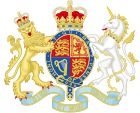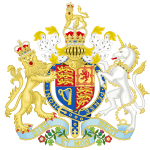- Constitutional Reform Act 2005
-
The Consitutional Reform Act 2005[1] 
Parliament of the United KingdomLong title An Act to make provision for modifying the office of Lord Chancellor, and to make provision relating to the functions of that office; to establish a Supreme Court of the United Kingdom, and to abolish the appellate jurisdiction of the House of Lords; to make provision about the jurisdiction of the Judicial Committee of the Privy Council and the judicial functions of the President of the Council; to make other provision about the judiciary, their appointment and discipline; and for connected purposes. Statute book chapter 2005 c 4 Dates Royal Assent 24 March 2005 Status: Text of statute as originally enacted Revised text of statute as amended The Constitutional Reform Act 2005 (c. 4) is an Act of the Parliament of the United Kingdom. It provided for a Supreme Court of the United Kingdom to take over the existing role of the Law Lords as well as some powers of the Judicial Committee of the Privy Council, and removed the functions of Speaker of the House of Lords and Head of the Judiciary of England and Wales from the office of Lord Chancellor.
Contents
Background
The office of Lord Chancellor was reformed to remove the ability of the holder to act as both a government minister and a judge. This arrangement ran contrary to the idea of separation of powers. The reform was motivated by concerns that the historical admixture of legislative, judicial, and executive power might not conform with the requirements of Article 6 (paragraph 1) of the European Convention on Human Rights, because a judicial officer, having legislative or executive power, is likely not to be considered sufficiently impartial to provide a fair trial.
Legislative history
The Bill was originally introduced in the House of Lords on 24 February 2004, and proposed the following, much broader, changes:
- Abolition of the office of "Lord High Chancellor of Great Britain", generally known as the Lord Chancellor.
- Setting up of a "Supreme Court of the United Kingdom" and moving the Law Lords out of the House of Lords to this new court.
- Other measures relating to the judiciary, including changes to the position of the Lord Chief Justice and changes to the Judicial Committee of the Privy Council.
The Bill caused much controversy and the Lords made amendments to it. The final Act keeps the post of Lord Chancellor, though its role in relation to the judiciary is greatly reduced and the office holder is no longer automatically Speaker of the House of Lords. Another major change is that the Lord Chancellor can now be from either the House of Commons or the House of Lords. Other measures remain generally the same as stated above.
The newly created Cabinet position of Secretary of State for Constitutional Affairs (originally created to wholly replace the Lord Chancellor's executive function) will continue, although the holder of that Cabinet post — renamed Secretary of State for Justice in 2007 — currently also holds the office of Lord Chancellor. The Lord Chancellor will remain as the custodian of the Great Seal (the Bill originally intended to put this into commission).
The Bill was approved by both Houses on 21 March 2005, and received Royal Assent on 24 March.
Changes resulting from the Act
The Act contains provisions which reform several institutions of the United Kingdom. The document is divided into three parts: the first concerns the reform of the office of Lord Chancellor, the second is about the new Supreme Court, and the third regulates the appointment of judges.
The establishment of a new Supreme Court is the main subject of the Act and it had consequences for the House of Lords and the office of Lord Chancellor. The sections contained in Part 3 prescribe that the Supreme Court will be composed of 12 judges (s. 23) and that the first judges will be the current twelve Lords of Appeal in Ordinary (s. 24). The following sections (ss. 26-31) set out the rules for the appointment of future members of the Court. A selection commission headed by the President of the Supreme Court (schedule 8) will propose one name to the Lord Chancellor who can reject that name only one time. Sections 32 to 37 are entitled Terms of Appointment and deal with issues such as tenure, salaries and allowances, resignation and retirement, and pensions. Section 37 additionally sets out that the new Court will assume the jurisdiction of the House of Lords and the jurisdiction in matters of devolution of the Privy Council.
The following sections deal with practical matters such as procedures, staff, and resources of the new Court and the fees of the judges. The Chief Executive of the Supreme Court must prepare an annual report on the work and it must be presented to both Houses of Parliament (s. 51).
In the third part of the Act there are provisions in regard to the appointment of judges. In 1991 the Law Society had criticized the old system (the Queen appointing judges on the advice of the Lord Chancellor), emphasizing its defects and recommending the establishment of an independent body responsible for appointing judges. The Constitutional Reform Act realized the hopes of the Law Society. Section 61 prescribes the creation of a Judicial Appointments Commission, which is now responsible for the appointment of judges for English and Welsh courts. The following sections regulate the structure and the procedures of the Commission.
Although the Appellate Committee of the House of Lords is abolished, the currently serving Law Lords keep their judicial role in the new Supreme Court. Newly appointed members of the Court will not take the peerage and will be called Justices of the Supreme Court. The Lord Chief Justice replaces the Lord Chancellor as head of the English judiciary.
The new Supreme Court sits in a separate building from the Houses of Parliament where the House of Lords formerly performed its judicial functions. After a lengthy survey of suitable sites, including Somerset House, it was decided that the location for the new court would be Middlesex Guildhall, in Parliament Square, Westminster, which was formerly a Crown court building. Lord Foster was chosen to make the necessary alterations. The building reopened as the Supreme Court on the 1st of October 2009.
Section 148 - Commencement
The following orders were made under section 148(1):
- The Constitutional Reform Act 2005 (Commencement No. 1) Order 2005 (S.I. 2005/1431 (C. 61))
- The Constitutional Reform Act 2005 (Commencement No. 2) Order 2005 (S.I. 2005/2284 (C. 96))
- The Constitutional Reform Act 2005 (Commencement No. 3) Order 2005 (S.I. 2005/2505 (C. 106))
- The Constitutional Reform Act 2005 (Commencement No. 4) Order 2006 (S.I. 2006/228 (C. 5))
- The Constitutional Reform Act 2005 (Commencement No. 5) Order 2006 (S.I. 2006/1014 (C. 33))
- The Constitutional Reform Act 2005 (Commencement No. 6) Order 2006 (S.I. 2006/1537 (C. 55))
- The Constitutional Reform Act 2005 (Commencement No. 7) Order 2007 (S.I. 2007/967 (C. 40))
- The Constitutional Reform Act 2005 (Commencement No. 9) Order 2007 (S.I. 2007/1252 (C. 54))
- The Constitutional Reform Act 2005 (Commencement No. 10) Order 2008 (S.I. 2008/2597 (C. 114))
- The Constitutional Reform Act 2005 (Commencement No. 11) Order 2009 (S.I. 2009/1604 (C. 83))
The Constitutional Reform Act 2005 (Commencement No. 8) Order 2007 (S.I. 2007/1121 (C. 51)) was made under section 148(3)
References
- ^ The citation of this Act by this short title is authorised by section 149 of this Act.
External links
- House of Common Reports on Bills January 2005 Scroll halfway down the page for this Bill's two reports.
- Department for Constitutional Affairs The official website of the Department of Constitutional Affairs, which includes a section on constitutional reform in the UK
- The election and role of the new Lord Speaker of the House of Lords
UK Legislation
- Official text of the Constitutional Reform Act 2005 as amended and in force today within the United Kingdom, from the UK Statute Law Database
- Official text of the Constitutional Reform Act 2005 as originally enacted within the United Kingdom, from the UK Statute Law Database
- Explanatory notes to the Constitutional Reform Act 2005.
 United Kingdom legislation
United Kingdom legislationPre-Parliamentary legislation Acts of Parliament by states preceding
the Kingdom of Great BritainActs of the Parliament of England to 1483 · 1485–1601 · 1603–1641 · Interregnum (1642–1660) · 1660–1699 · 1700–1706
Acts of the Parliament of Scotland
Acts of the Parliament of Ireland to 1700 · 1701–1800Acts of Parliament of the
Kingdom of Great Britain1707–1719 · 1720–1739 · 1740–1759 · 1760–1779 · 1780–1800
Acts of Parliament of the United Kingdom of
Great Britain and Ireland and the United
Kingdom of Great Britain and Northern IrelandChurch of England Measures Legislation of devolved institutions Acts of the Scottish Parliament
Acts and Measures of the Welsh Assembly
Acts of the Northern Ireland Assembly / of the Northern Ireland Parliament
Orders in Council for Northern IrelandSecondary legislation Categories:- United Kingdom Acts of Parliament 2005
- Government of the United Kingdom
- Constitutional laws of the United Kingdom
- House of Lords
- United Kingdom court systems
- Court systems in England and Wales
- Judicial Committee of the Privy Council
- Supreme Court of the United Kingdom
Wikimedia Foundation. 2010.

